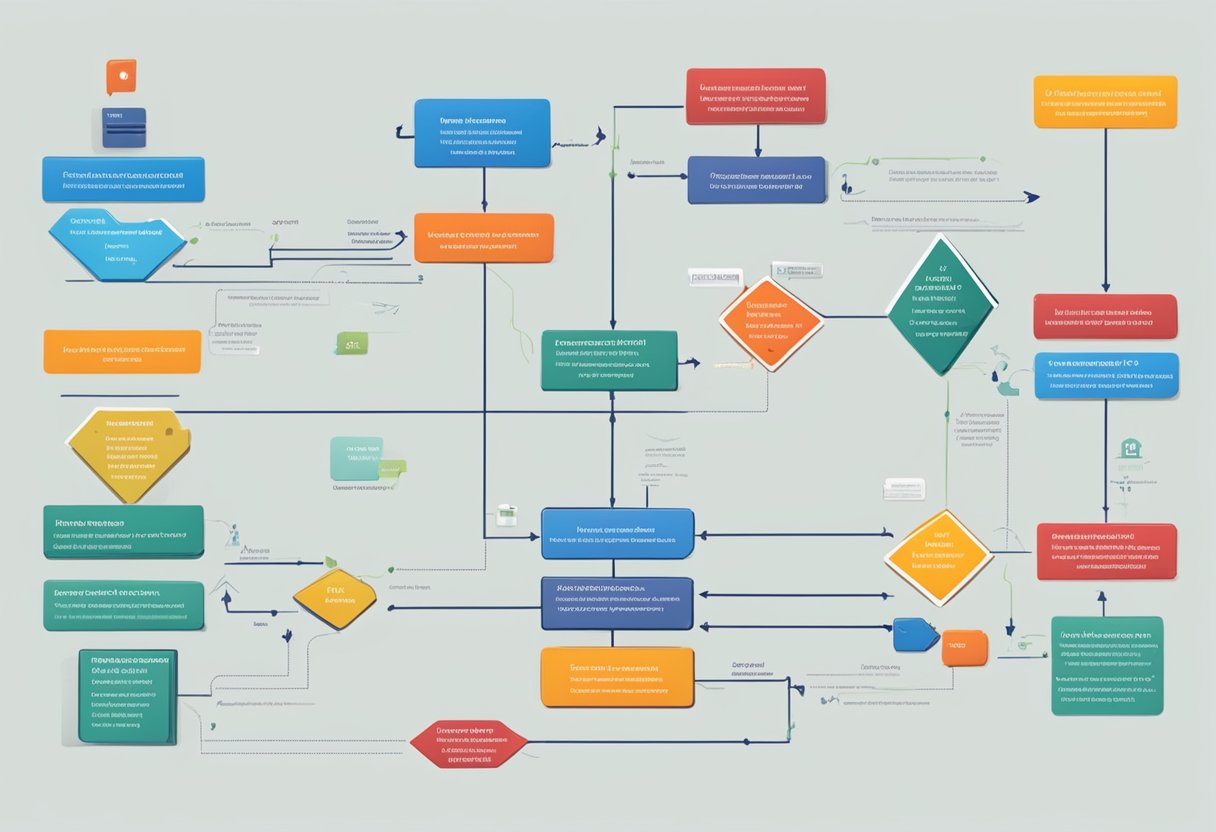ATC SMS; ATC SMS, or Air Traffic Control Student Management System, is a web-based platform that helps universities and colleges manage student data online. It is an all-in-one system that allows schools to streamline their administrative tasks, such as tracking student attendance, managing academic records, and providing online courses. The system is designed to be user-friendly, with an intuitive interface that makes it easy for students and faculty members to access the information they need.

ATC SMS is used by a number of universities and colleges around the world, including Arusha Technical College in Tanzania. The system has become increasingly popular in recent years as more and more schools move towards digital solutions for managing student data. With ATC SMS, schools can save time and money by automating many of their administrative tasks, while also providing students with a more convenient way to access their academic records.
Key Takeaways
- ATC SMS is a web-based platform that helps universities and colleges manage student data online.
- The system is designed to be user-friendly, with an intuitive interface that makes it easy for students and faculty members to access the information they need.
- ATC SMS has become increasingly popular in recent years as more and more schools move towards digital solutions for managing student data.
Overview of ATC SMS
Definition of ATC SMS
Air Traffic Control Safety Management System (ATC SMS) is a structured and systematic approach to managing safety risks in air traffic control and navigation services. It is a set of procedures, practices, and policies that aim to mitigate potential hazards and ensure the safety of passengers, crew, and the public. The Federal Aviation Administration (FAA) defines ATC SMS as an evolutionary process in system safety and safety management that obligates organizations to manage safety with the same level of priority as other core business processes.
ATC SMS involves four components: safety policy, safety risk management, safety assurance, and safety promotion. Safety policy establishes the organization’s commitment to safety and defines the processes and procedures for managing safety risks. Safety risk management identifies potential hazards and assesses the associated risks to determine the best course of action. Safety assurance monitors the effectiveness of the safety risk management processes and ensures that the organization’s safety goals are being met. Safety promotion fosters a positive safety culture and encourages the reporting of safety concerns.
Importance of Safety Management Systems
The importance of safety management systems in air traffic control cannot be overstated. The aviation industry is inherently risky, and safety risks can arise from a variety of sources, including human error, equipment malfunction, and environmental factors. Safety management systems provide a proactive approach to managing these risks and reducing the likelihood of accidents and incidents.
ATC SMS is particularly important because of the critical role that air traffic control and navigation services play in ensuring the safety of air travel. By implementing an effective safety management system, organizations can identify potential hazards, assess the associated risks, and take proactive measures to mitigate those risks. This results in a safer and more efficient air traffic control system, which benefits all stakeholders, including passengers, crew, and the public.
In summary, ATC SMS is a structured and systematic approach to managing safety risks in air traffic control and navigation services. It involves four components: safety policy, safety risk management, safety assurance, and safety promotion. Safety management systems are essential in the aviation industry to ensure the safety of passengers, crew, and the public and to reduce the likelihood of accidents and incidents.
Regulatory Framework

ICAO Standards
The International Civil Aviation Organization (ICAO) provides the global framework for aviation safety management. ICAO Annex 19 establishes the safety management standards and recommended practices for States and air navigation service providers (ANSPs). The Annex requires States to implement a safety management system (SMS) as a core component of their safety oversight system.
ICAO SMS framework consists of four components: safety policy and objectives, safety risk management, safety assurance, and safety promotion. The Annex also requires States to establish safety performance indicators and safety targets to measure the effectiveness of their SMS implementation.
National Regulations
States have the responsibility to regulate aviation safety within their territories. National regulations for SMS implementation vary across countries and regions. However, most regulations are based on the ICAO standards and recommended practices.
For example, the Federal Aviation Administration (FAA) requires SMS implementation for certificated airports and air traffic control towers under Title 14 Code of Federal Regulations (CFR) Part 139. The FAA’s SMS framework consists of four components: safety policy, safety risk management, safety assurance, and safety promotion.
Similarly, the European Union Aviation Safety Agency (EASA) requires SMS implementation for certificated operators of airplanes and helicopters authorized to conduct commercial air transportation. EASA also mandates SMS for continuing airworthiness of an aircraft and its components. EASA SMS framework consists of three components: safety policy, safety risk management, and safety assurance.
In summary, the regulatory framework for ATC SMS is based on ICAO standards and recommended practices. States and ANSPs are required to implement SMS as a core component of their safety oversight system. National regulations for SMS implementation vary across countries and regions but are based on the ICAO framework.
Key Components of ATC SMS
An effective Safety Management System (SMS) for Air Traffic Control (ATC) should have four key components: Safety Policy, Risk Management, Safety Assurance, and Safety Promotion.
Safety Policy
The Safety Policy component establishes senior management’s commitment to continually improve safety. It defines the methods, processes, and organizational structure needed to meet safety goals. The policy should include clear objectives, targets, and performance indicators that reflect the organization’s safety culture. It should also outline the responsibilities of each individual in the organization to ensure that safety is a top priority.
Risk Management
The Risk Management component is the process of identifying, assessing, and mitigating risks associated with ATC operations. It involves analyzing the safety data to identify hazards and assess the risks they pose. Once the risks are identified, the organization should develop and implement risk controls to reduce the likelihood and severity of accidents or incidents.
Safety Assurance
The Safety Assurance component is the process of monitoring and evaluating the effectiveness of the SMS. It involves collecting and analyzing safety data to identify trends and areas for improvement. Safety Assurance should also include regular safety audits and assessments to ensure compliance with safety policies and regulations.
Safety Promotion
The Safety Promotion component is the process of creating a positive safety culture within the organization. It involves providing training and education to all employees to help them understand their roles and responsibilities in maintaining a safe work environment. Safety Promotion should also include communication and feedback mechanisms to ensure that employees feel comfortable reporting safety concerns or incidents.
Overall, an effective ATC SMS should have all four components working together to ensure the safety of ATC operations. By implementing a robust SMS, organizations can reduce the risk of accidents and incidents, improve safety performance, and enhance the overall safety culture within the organization.
Implementation Strategies

When implementing an Air Traffic Control (ATC) Safety Management System (SMS), there are several strategies that can be employed to ensure success. These strategies include planning and organization, training and education, performance monitoring, and continuous improvement.
Planning and Organization
Planning and organization are critical components of implementing an ATC SMS. It is important to establish a clear plan that outlines the steps to be taken and the resources needed to implement the SMS effectively. This plan should include a timeline for implementation, as well as a budget for the necessary resources.
To ensure successful implementation, it is also important to establish clear roles and responsibilities for all personnel involved in the SMS. This includes identifying who will be responsible for overseeing the SMS, as well as who will be responsible for implementing specific components of the system.
Training and Education
Training and education are essential components of any successful ATC SMS. All personnel involved in the system must be trained on the components of the SMS, as well as how to implement and use it effectively. This includes training on hazard identification and risk management, as well as training on how to report safety incidents and near-misses.
In addition to initial training, ongoing education and training should be provided to ensure that all personnel remain up-to-date on the latest safety procedures and best practices.
Performance Monitoring
Performance monitoring is a critical component of any ATC SMS. This involves regularly monitoring the performance of the system to ensure that it is functioning as intended. This includes monitoring safety incident reports, conducting safety audits, and reviewing safety performance indicators.
By monitoring the performance of the SMS, it is possible to identify areas where improvements can be made and take corrective action as needed.
Continuous Improvement
Continuous improvement is an essential component of any successful ATC SMS. This involves regularly reviewing the system and identifying areas where improvements can be made. This includes reviewing safety incident reports, conducting safety audits, and soliciting feedback from personnel involved in the system.
By continually improving the SMS, it is possible to ensure that it remains effective and up-to-date with the latest safety procedures and best practices.
Challenges and Solutions
Integration with Existing Protocols
One of the biggest challenges in implementing an ATC SMS is integrating it with existing protocols. Air traffic demand could increase by 30% by the end of the decade, which means that there will be more pressure on ATC systems to operate efficiently. However, implementing new protocols and procedures can be challenging, especially if they are not compatible with existing systems.
To address this challenge, ATC organizations must work closely with their IT departments to ensure that their SMS is integrated with existing protocols. This may involve developing new software or upgrading existing systems to ensure that they are compatible with the new SMS.
Technology and Infrastructure
Another challenge in implementing an ATC SMS is ensuring that the necessary technology and infrastructure are in place. SMS requires a significant investment in technology and infrastructure, including hardware, software, and training.
To address this challenge, ATC organizations must work with their IT departments to ensure that they have the necessary technology and infrastructure in place. They may need to invest in new hardware and software, as well as provide training to staff to ensure that they are able to use the new systems effectively.
Human Factors
A third challenge in implementing an ATC SMS is ensuring that staff are willing and able to use the new systems. Unorganized or poorly planned implementations can lead to resistance from staff, which can result in a waste of time and money.
To address this challenge, ATC organizations must ensure that staff are trained in the use of the new systems and that they understand the benefits of the new SMS. They may also need to provide incentives for staff to use the new systems, such as bonuses or promotions for those who embrace the new protocols and procedures.
Case Studies
Successful Implementations
Several airports around the world have successfully implemented ATC SMS. One such example is the Hong Kong International Airport (HKIA). The airport has a comprehensive SMS in place, which includes a reporting system for safety incidents, a safety risk management system, and a safety performance monitoring system. The system has helped HKIA to identify and mitigate safety risks in a timely manner, resulting in a safer aviation environment.
Another successful implementation of ATC SMS is at the Dubai International Airport. The airport has a proactive safety culture, which is reflected in its SMS. The airport’s SMS includes a hazard identification and risk assessment process, a safety reporting system, and a safety performance monitoring system. The airport has been able to reduce the number of safety incidents by implementing the SMS, resulting in a safer aviation environment for all users.
Lessons Learned
While there have been many successful implementations of ATC SMS, there have also been some lessons learned. One lesson learned is the importance of involving all stakeholders in the SMS process. This includes ATC personnel, airport operators, airlines, and other aviation stakeholders. By involving all stakeholders in the process, the SMS is more likely to be effective and successful.
Another lesson learned is the importance of continuous improvement. The aviation industry is constantly evolving, and so too must the SMS. Regular reviews and updates to the SMS are necessary to ensure that it remains relevant and effective.
In conclusion, successful implementation of ATC SMS requires a comprehensive and proactive approach. By involving all stakeholders in the process and continuously improving the SMS, airports can create a safer aviation environment for all users.
Frequently Asked Questions
How can I activate the ATC SMS service?
To activate the ATC SMS service, you need to provide your mobile number to ATC. Once your number is registered, ATC will send you text messages regarding your account. ATC does not charge for sending or receiving text messages, but your mobile provider may apply charges.
What steps are involved in obtaining an ATC control number?
To obtain an ATC control number, you need to register with ATC online. You will be required to provide personal information such as your name, address, and contact details. You will also need to provide your qualifications and experience. Once you have registered, ATC will assign you a control number.
Where can I find the ATC online registration process?
The ATC online registration process can be found on the FAA website. You will need to fill out an online form and provide the necessary information.
How do I log in to the ATC student portal?
To log in to the ATC student portal, you will need to visit the FAA website and click on the ATC student portal link. You will then be prompted to enter your username and password.
What is the procedure to access the GEPG payment system for ATC?
To access the GEPG payment system for ATC, you will need to visit the FAA website and click on the GEPG payment system link. You will then be prompted to enter your username and password.
How can I troubleshoot issues accessing the ATC website?
If you are experiencing issues accessing the ATC website, there are a few things you can try. First, ensure that you have a stable internet connection. If that does not work, try clearing your browser cache and cookies. If the issue persists, contact ATC support for further assistance.
Also Read:
- Tulasi Engineering Limited Tanzania Vacancies 2024: Latest Job Openings
- Management Sciences for Health Tanzania Vacancies 2024: Latest Job Openings
- Bolt Dar es Salaam, Tanzania Vacancies 2024: Opportunities for Job Seekers
- Imperial Dar es Salaam, Tanzania Vacancies 2024: Opportunities for Job Seekers
- Catholic Relief Services: Dar es Salaam, Tanzania Vacancies 2024









Leave a Reply
View Comments